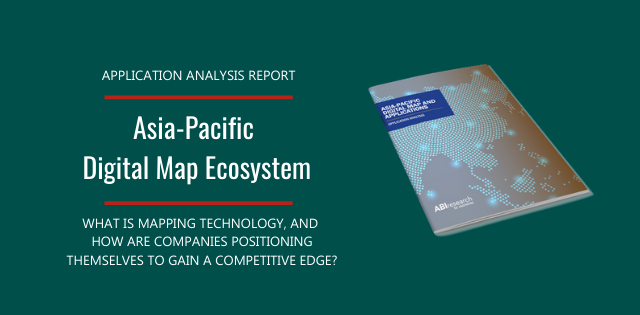The collection of data in digital mapping is done through several methods, among them: participatory mapping, image interpretation, and utilizing Global Positioning System (GPS) receivers. These large amounts of data require a Geographic Information Systems (GIS) platform to aggregate, display, visualize, and analyze. The APIs and SDKs (Software Development Kit) of these platforms provide developers with the flexibility to create their own maps and applications.
The digital map market in Asia-Pacific consists of many different domestic and international players. In countries like China, Korea, and Japan, the market is predominantly made up of large, established domestic players like AutoNavi, Zenrin, and Naver, which might make it difficult for companies to penetrate the market. Mapping regulations in countries such as China and Korea have strict requirements on the display and storing of map data, with possible fines imposed for violations. These are in place to deter international firms from trying to penetrate the digital map market. The top 5 vendors in each of China, Japan, and Korea comprise 90% of the domestic market share, showing the strong establishment of these companies in their local market.
The Asia-Pacific digital map market size has seen a growth of 10% from US$2.6 billion in 2018 to US$2.9 billion in 2019. ABI Research finds that the top 5 digital map vendors in the region had a combined revenue of US$1.5 billion in 2019, making up about 53% of the region’s market share.
Easier Entry to Market Outside APAC
On the other hand, countries such as Australia and New Zealand are more open in their digital map regulations and requirements, allowing more well-positioned global firms to establish themselves in these areas. It also enables smaller companies to enter the market with fewer barriers. In Indonesia, Thailand, and Vietnam, a mixture of international firms and domestic players make up the market. Additionally, there are an increasing number of startups, GIS platform companies offering alternative products and end-to-end services, providing an added layer to the digital map market.
Digital Mapping Across Numerous Verticals
In recent developments, Mitsubishi, Japan’s biggest trading house, and telecoms company NTT have jointly acquired a 30% ownership in HERE Technologies, the world’s leading mapping company based in Netherlands. This deal is aimed at developing route optimization services in logistics for Japanese companies, further cementing HERE’s growth and penetration in the Asia-Pacific region. There seems to be a growing focus on location data and technology as a business enhancer for many businesses in Asia-Pacific. Companies in several verticals, including automotive, transport and logistics, public sector and infrastructure, are seeking out these opportunities through investments in, and partnerships with, digital mapping companies.
With the push for developments in fields such as autonomous driving, intelligent transport systems, and smart cities, the digital map ecosystem has seen an increase in partnerships to accelerate growth in each of these fields. For example, Toyota Motors has partnered with Chinese autonomous driving start-up Momenta to commercialize its HD mapping system in the China market. The Japanese automaker utilizes satellites and cameras to build HD maps of roads, which is a crucial requirement in autonomous driving development. On the intelligent transport systems front, companies like Bosch are cooperating with local system integrator and technology service provider, FPT IS in Vietnam, to upgrade road transportation systems with smart surveillance and management systems to improve traffic flows, optimize route improvements or expansions, and issue fines. As Asia-Pacific is seeing growth in smart city projects, this consequently produces large amounts of location data that requires efficient management.
Expanding the Digital Mapping Ecosystem
As technologies such as AI, 5G, and IoT deepen in their capabilities, it provides fresh opportunities for location technology and digital mapping companies seeking a competitive edge. The expansion of IoT in intelligent transport systems, smart meters, and smart grids requires accurate location data to effectively monitor and track sensors, vehicles, and other related technologies. The use of AI can enhance location-based services as well as analytics capabilities, which would allow vendors to gain a competitive edge. Other products, such as ADAS, are seen to be growing in use throughout the automotive and transport and logistics industry. Location technology is set to be a crucial component in the evolution of businesses as companies look for creative and innovative ways to improve on their products and services.

